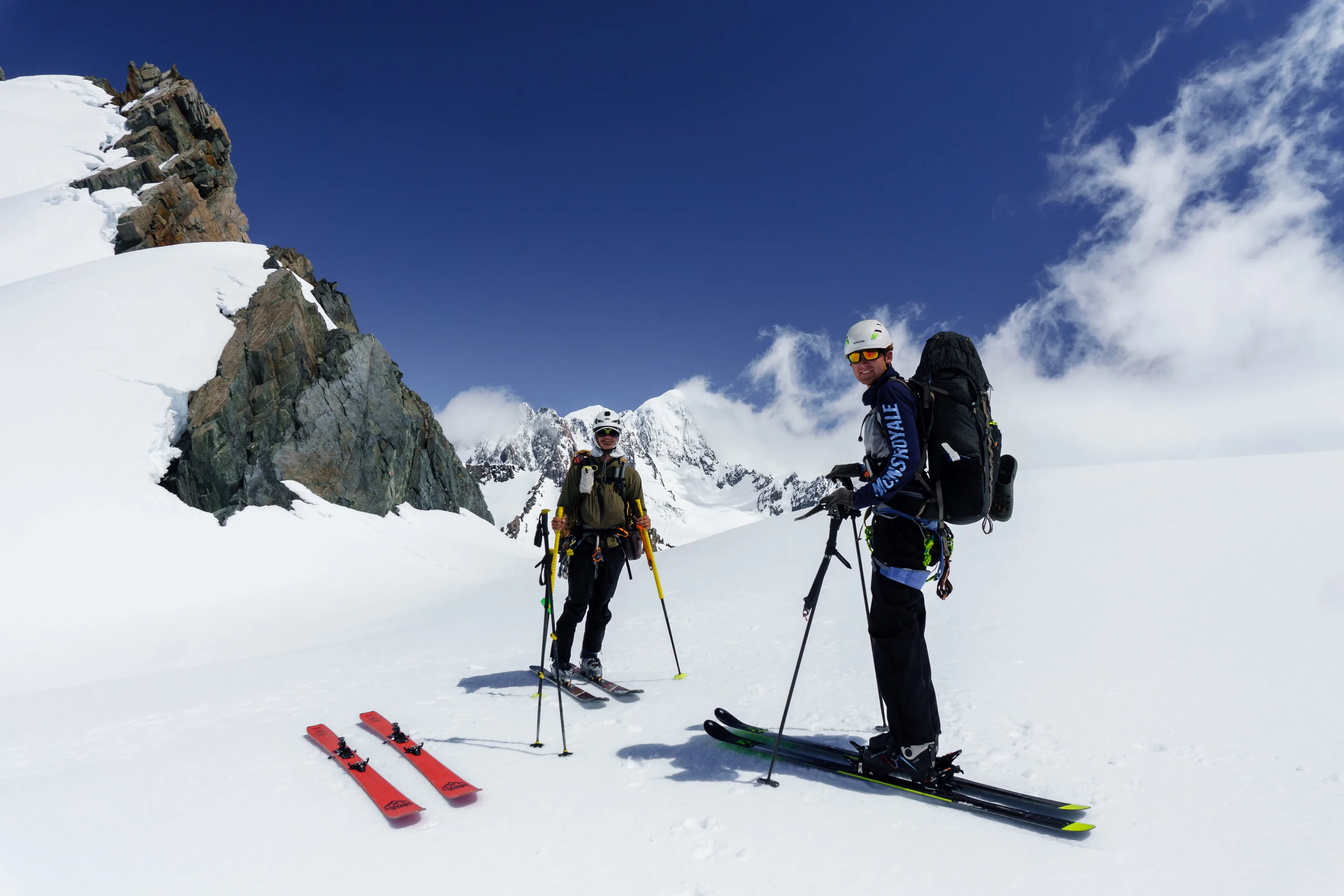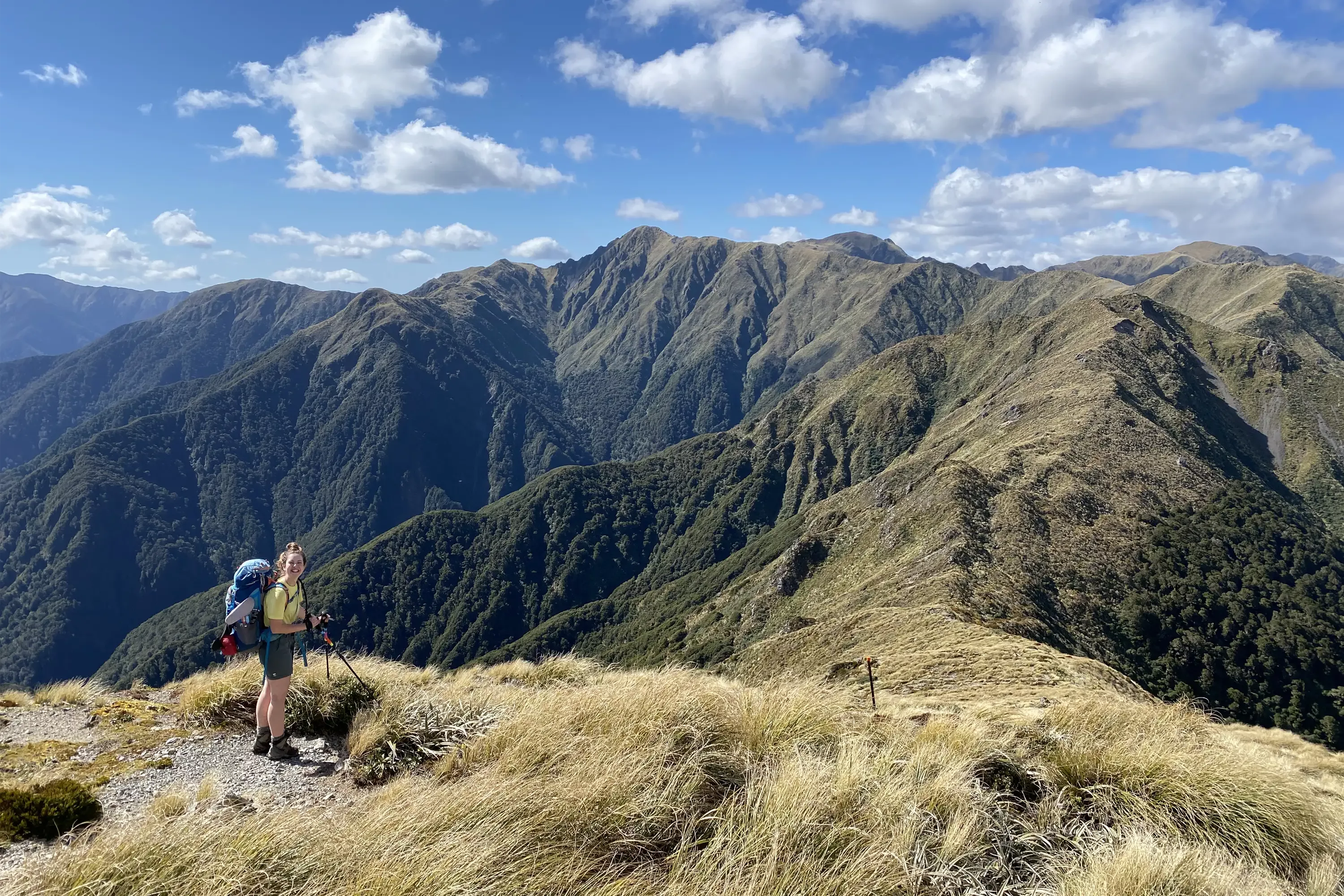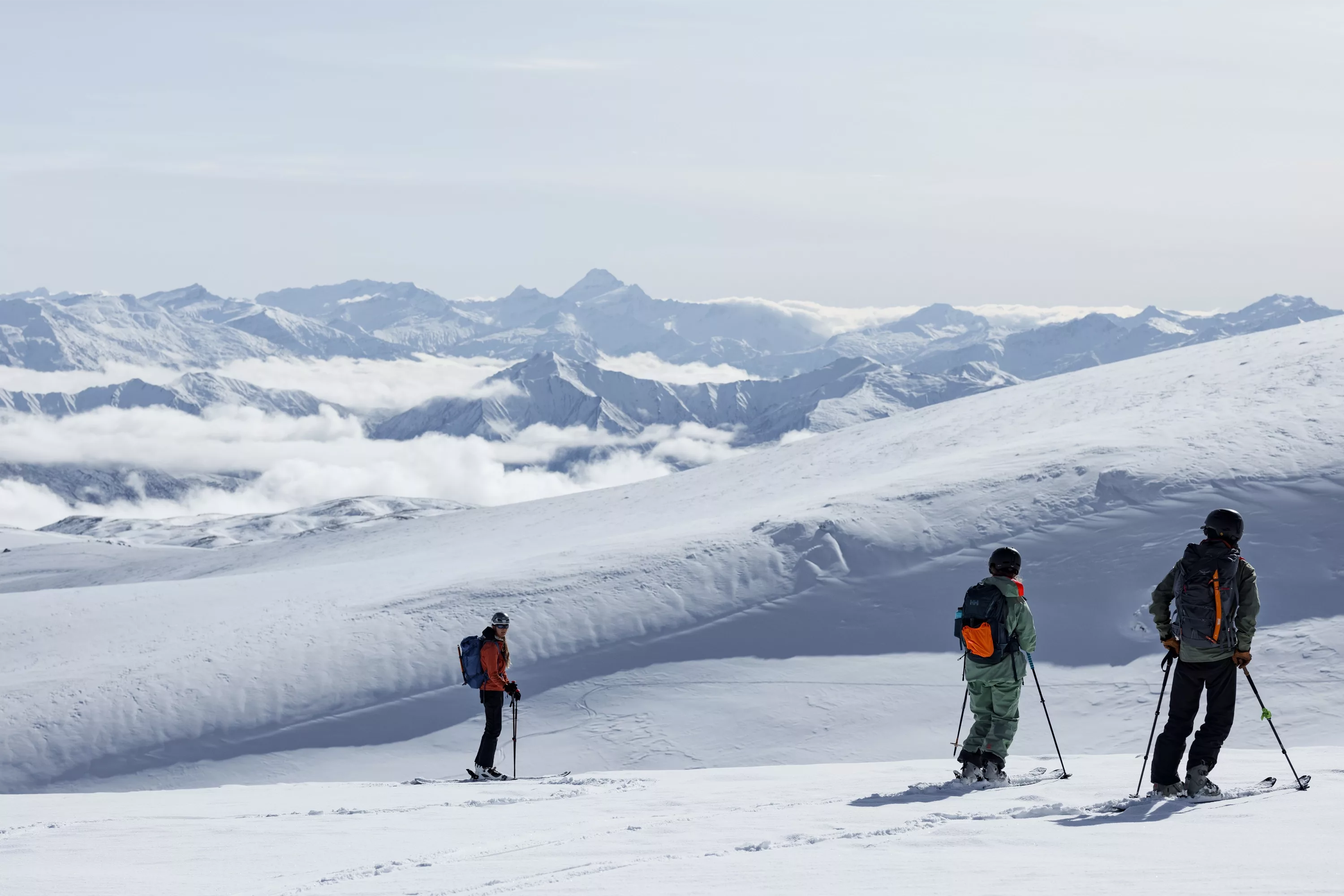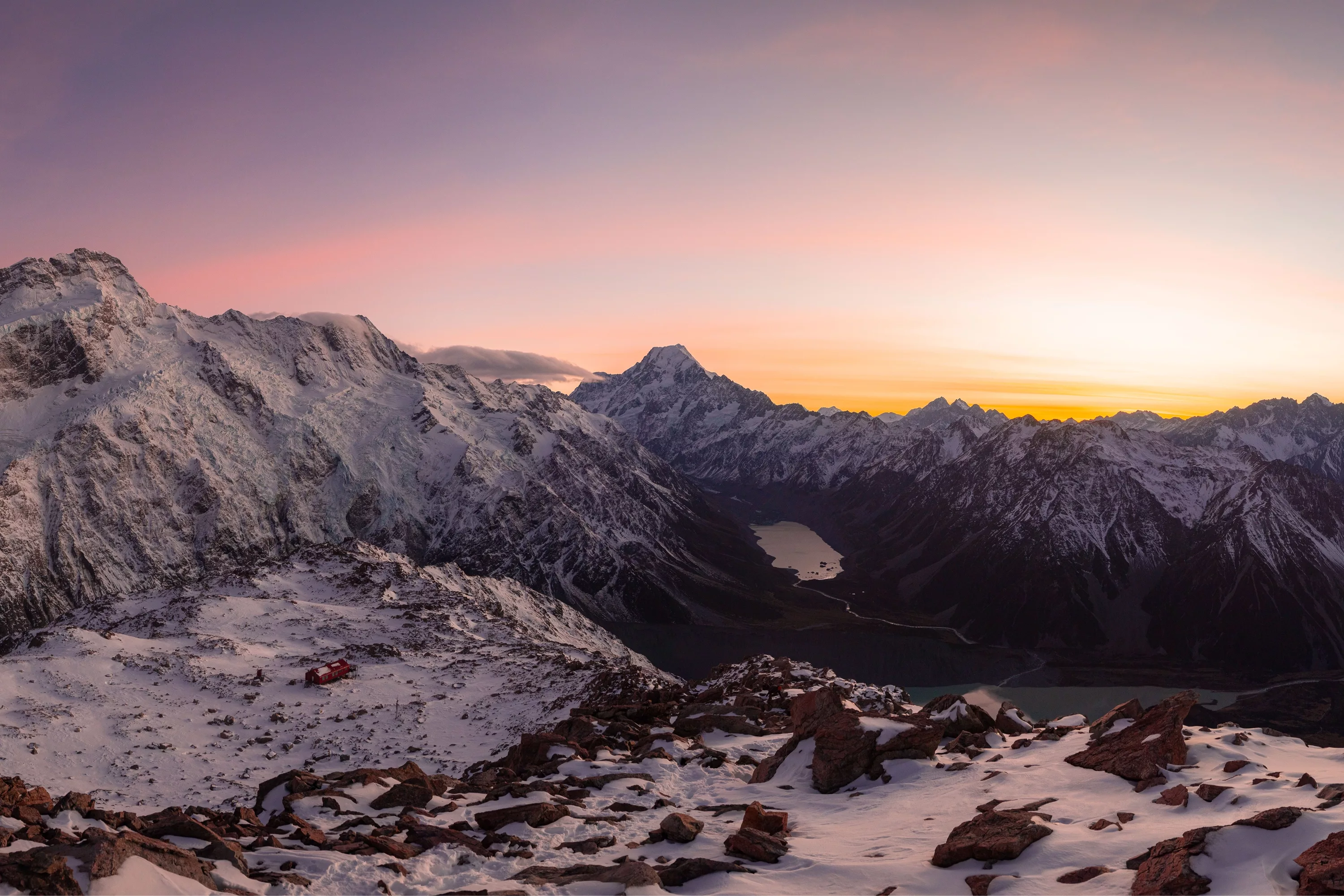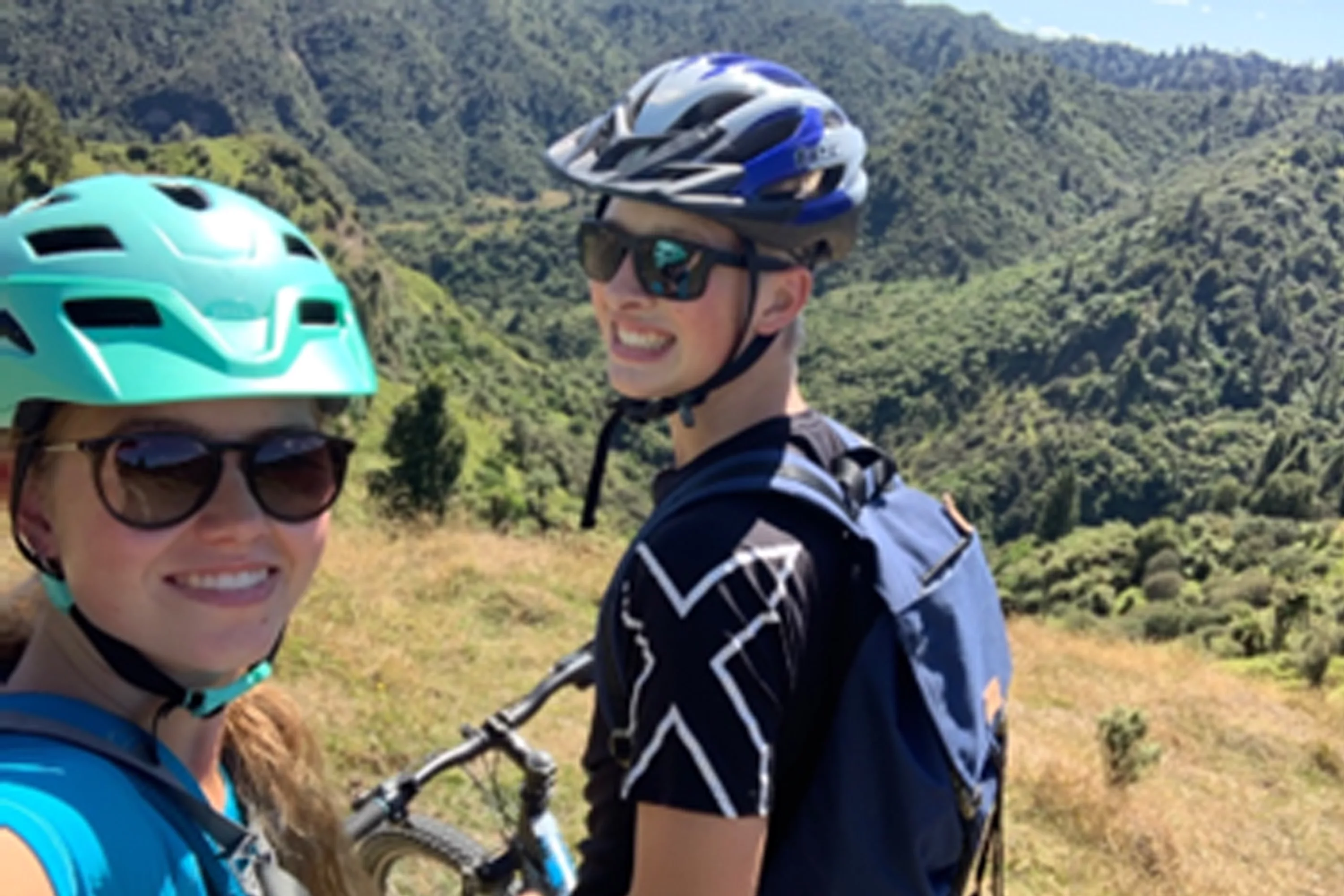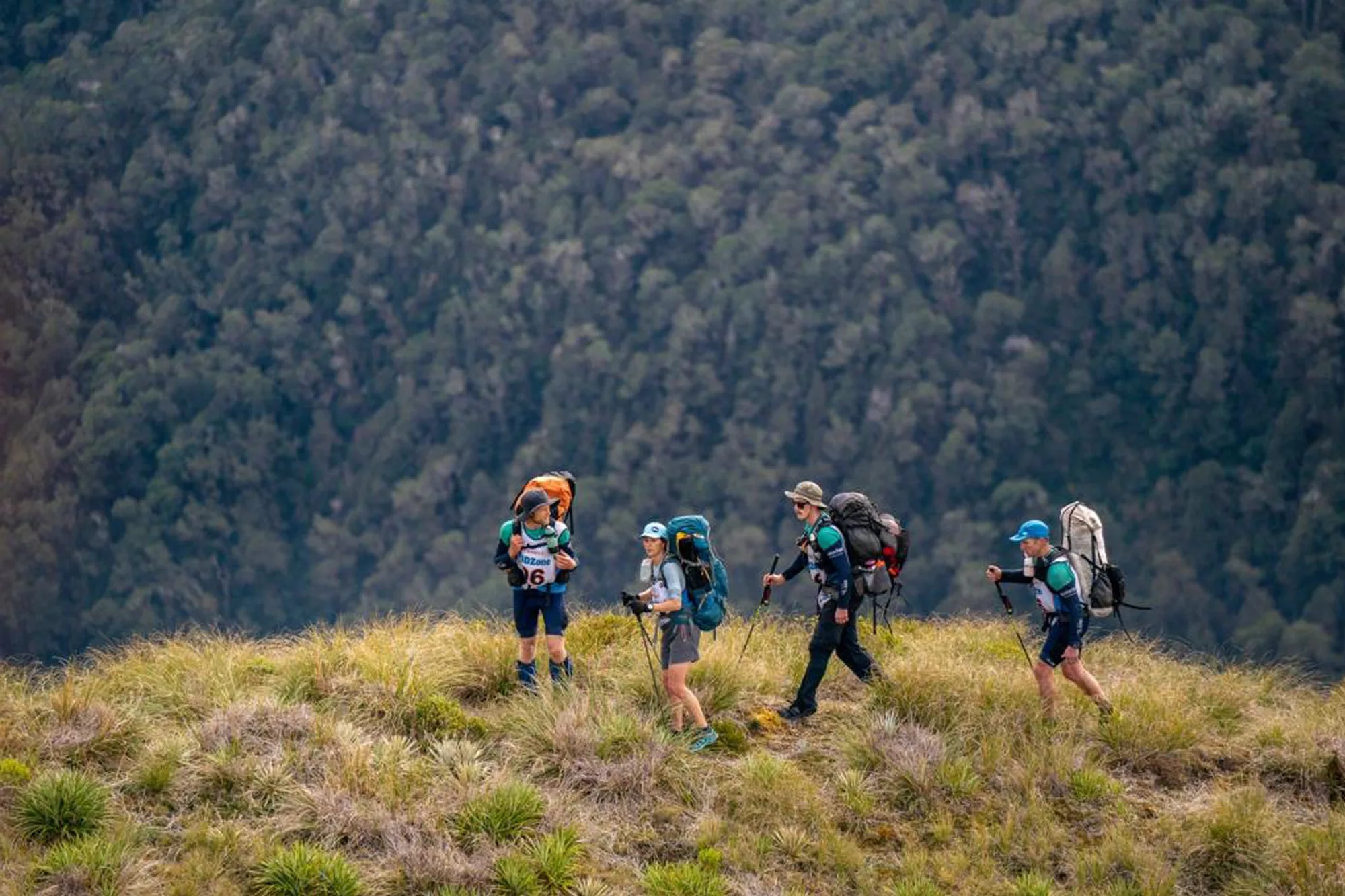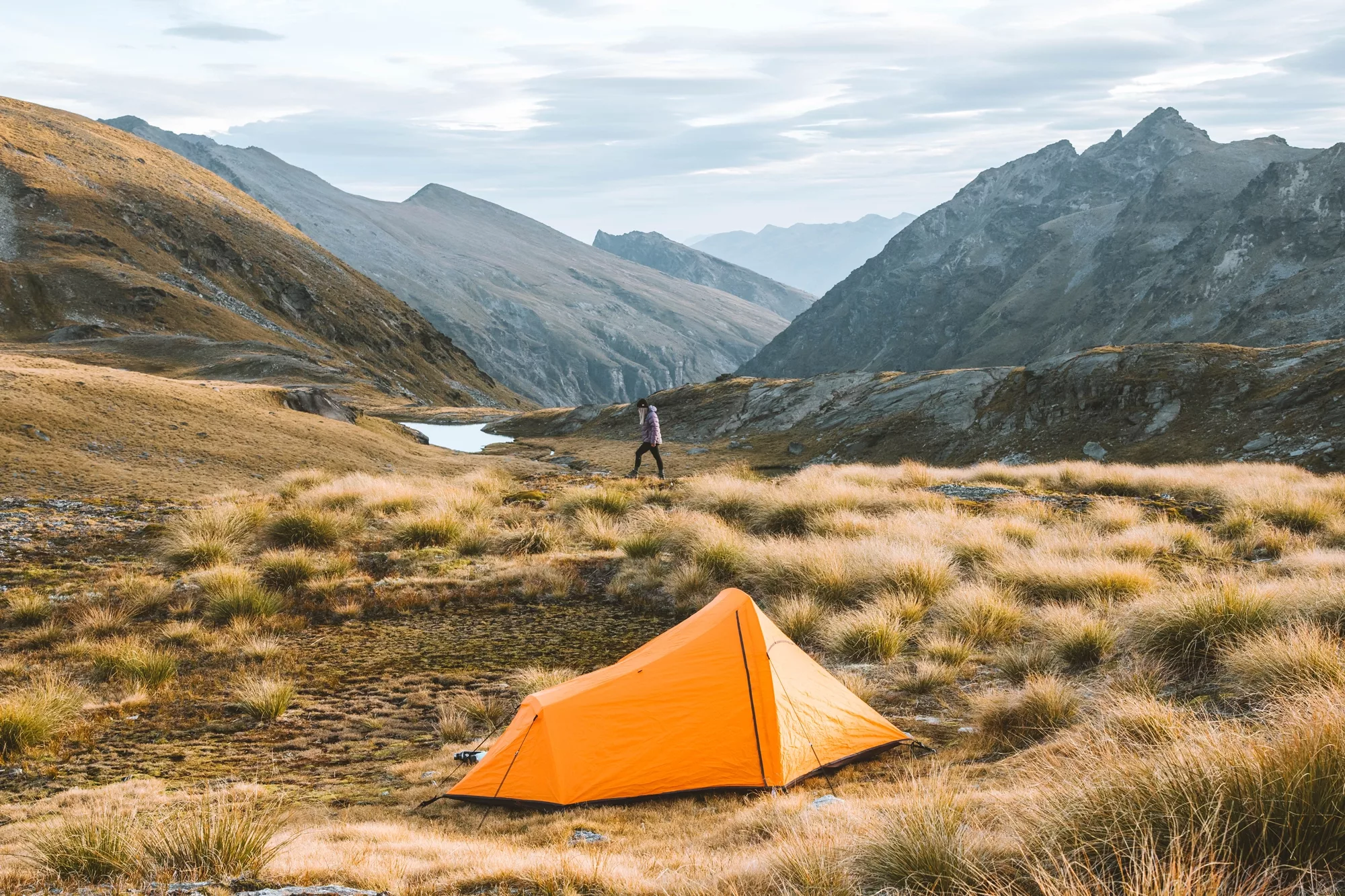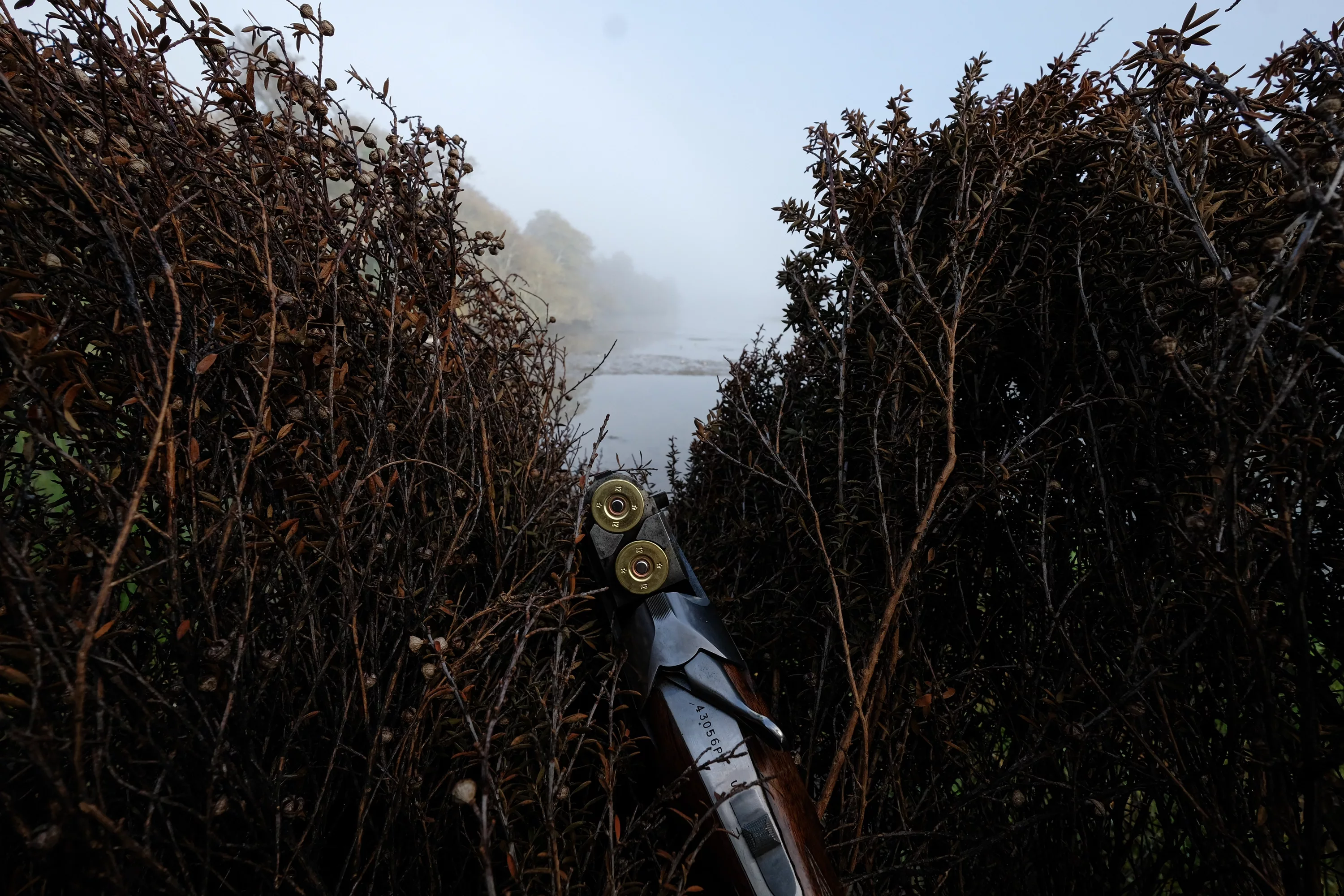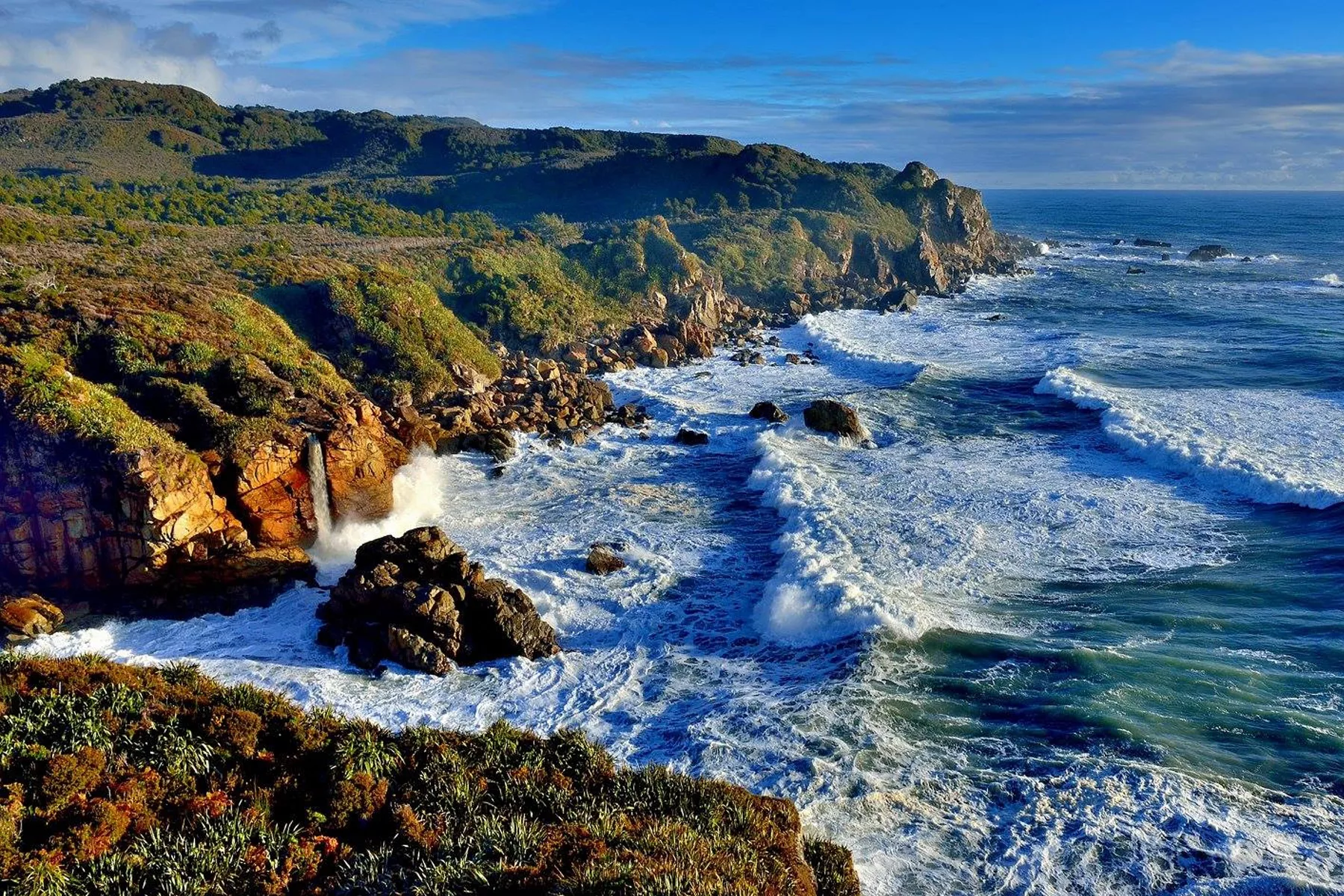Dreaming Of Wapiti Hunting
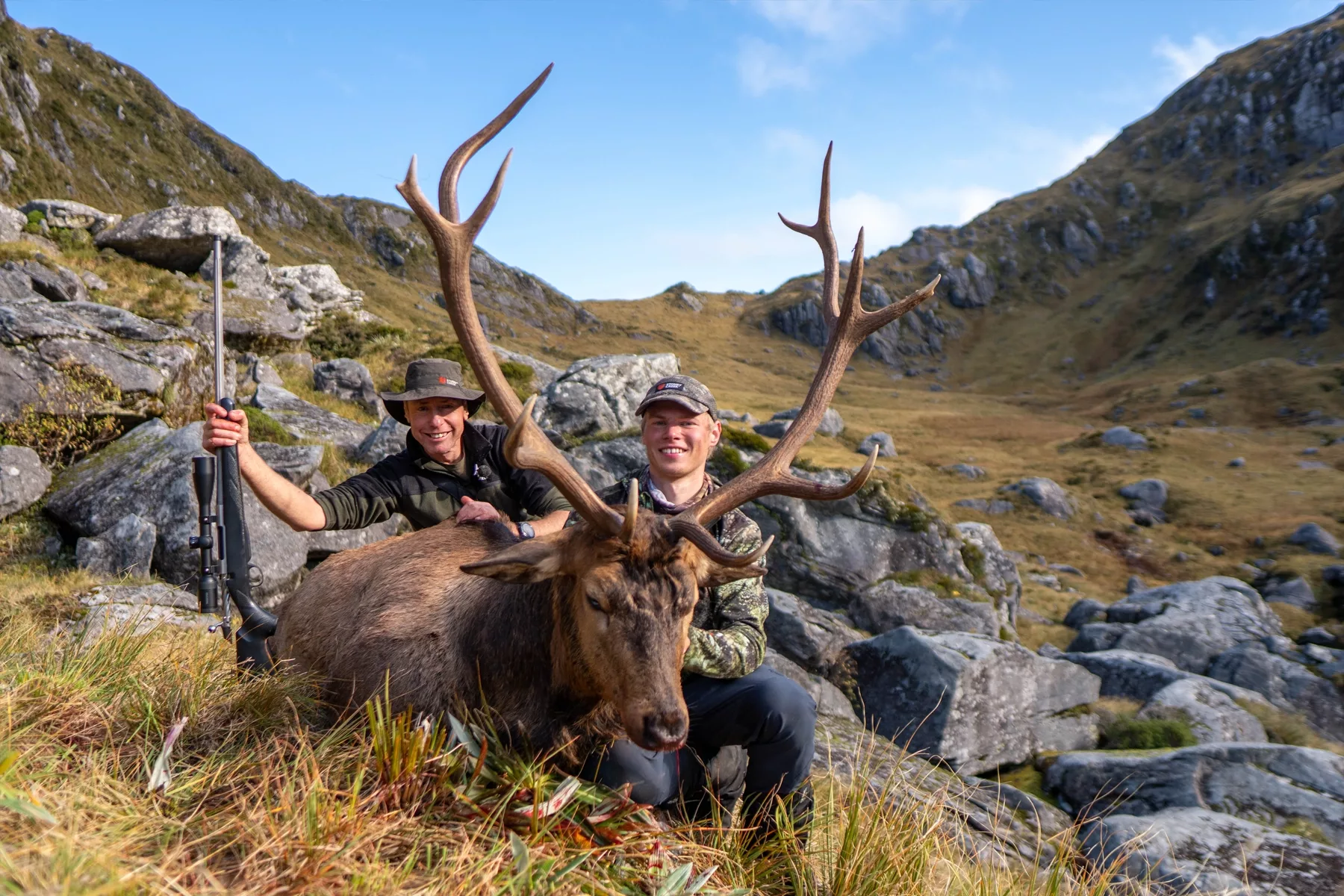
Ever since my first trip down south chasing bugling bulls in the rugged and remote country of Fiordland, securing a Wapiti hunting trophy had become the goal at the very top of my hunting bucket list. Not just any animal, but a bull with character, good antlers and most importantly, age; a minimum of eight to ten years old. A mighty creature that would've had the chance to pass on his genetics and be past his prime. That was the dream.
I'd been lucky enough to spend over 30 days in Fiordland during the bugle, ten days as part of an actual party and the rest as a tag-along filming for our TV show, NZ Hunter Adventures. Even though most of this time was theoretically spent ‘working’, there is no place on earth I'd rather have been. Hearing those big creamy-coated bulls let off their spine-tingling bugles and watching them round up their harems of cows in such steep and unforgiving mountains is an amazing and incredibly humbling experience. It’s almost spiritual in some ways.
THE WAPITI HUNTING DREAMS BEGIN
The year 2018 began with some luck and saw Greg and I draw a ballot, the first period of a core block that tends to produce quality bulls. But as per usual, Fiordland did what Fiordland does and our hopes and dreams of ten good days in God’s country were shattered with a horrific weather forecast. As beautiful and scenic as Fiordland is on a fine day, it can become very wet, windy, and challenging in an instant - something that needs to be respected. A few extra days were had sipping tea in the video editing room or ‘dungeon’ as we like to call it, but that Wapiti hunting dream was proving irresistible, and since we had drawn such a great block, we headed South and went for it anyway.
What followed were numerous days stuck in our cosy three-man tent, sheltering from gale force winds and rain in our expertly excavated rock crevasse. We’d sneak out any time we got a break in the weather and were rewarded for our resolve with the spotting of a very large 15-point bull, one of the biggest Wapiti Greg and Willie had ever laid eyes on. Sadly, he was only five and a half years of age, so we decided to leave him, to hopefully mature and continue passing on his great genetics in this area. The herd still needed this bull more than I did so it was a no brainer decision, but it’s always a little hard walking away from the greatest animal you’ve ever seen. This bull had the potential to break some serious records if he could survive a few more years and reach full maturity.

THE FAILED 2020 WAPITI HUNTING BALLOT
2020 was a year to remember for a lot of reasons – both good and bad. With the police supervised ballot being ‘rigged’ as the odd person likes to claim, Greg and I managed to get the same block but this time it was for the second period. We were stoked, our prayers and good karma from leaving the big bull must have paid off - but then Covid-19 hit, and all ballots for the Wapiti hunting bugle were effectively cancelled as the country went into a nationwide lockdown. Our Wapiti dreams were shattered once again.
After suffering through lockdown levels 4 and 3, we were eager for level 2 to commence, which would allow us to go hunting again on public land. The closer we got to that date, the more excited we became, and a close eye was now kept on the weather forecast. Jackpot, it looked like a good weather window was approaching! With the truck fully loaded with gear, Willie and I picked Greg up from the airport and headed south. The forecast showed seven days of stunning weather followed by a massive storm.
THE FIORDLAND WAPITI AREA VENISON PROJECT
Things couldn't get any better, and then on the drive, Roy Sloan from the Fiordland Wapiti Foundation (FWF) rang. He’d managed to pull together a great initiative called the Fiordland Wapiti Area Venison Project. The Foundation removes approximately 1400 deer annually from the Wapiti area to manage their vegetation impact, but since the recent venison price crash, it hadn’t been viable for them to recover and export the deer. The Foundation had worked alongside the NZ Game Animal Council and approached the Department of Conservation to partly fund 600 deer to be recovered by local Te Anau operators, minced in Invercargill, and then distributed to foodbanks around the country free of charge to families in need. He wanted us to help document this great post-Covid news story by filming some of the recovery, processing, and distribution. It was a great project to be involved in and seeing the Wapiti country from the back seat of a helicopter during the deer recovery part was certainly a neat perspective, but it also meant we’d now lost a few days of our fine weather window to look for the big bull…

SEARCHING FOR A 15 POINT WAPITI BULL
One of the unique things about hunting in Fiordland is that most of it is a wilderness area. That means you’ve got to walk and carry everything you need for a trip on your back. The travel is challenging and all off-track aside from a few of the main-valley routes that the FWF volunteers use eight times a year to service their 500+ predator traps. Our main goal for the trip was to try find the 15 pointer we’d left two years prior. By now he should be mature and hopefully have grown to his full trophy potential. But we didn’t actually know if he was still alive.
There were all sorts of rumours floating around, that he’d been shot and also that he had been seen in the same area. It all added to the adventure ahead. When we finally got to the tops it was a joy to put the pack down and get the binoculars out to take in the scenery. For me personally, it’s important to go into a trip like this with the right goal in mind. And that’s simple, to enjoy a memorable trip in stunning country with no expectation of bringing a set of antlers home. If securing some antlers was my only goal, chances are that I’d more often than not be left disappointed, or even worse, shoot the wrong animal, like a five year old bull with heaps of potential. Being able to enjoy just the scenery and animals is crucial and the key to always having an incredible experience.
A FIORDLAND WINTER MISSION
This trip was slightly different in a couple of ways - it was well after the bugle and now entering winter. This meant it was a lot colder and the shaded side of the tops were largely frozen which made for some interesting travel. These exposed and slippery faces took a lot of concentration to traverse, and we’d decided against bringing crampons, a decision we quickly regretted. It wasn’t all bad though. We had a theory that because everything was cold and frozen, the deer would be out in the open seeking the warm and sunny faces. But theories are just theories, and for the first day of hunting, the only animals of note we laid eyes on were a few Wapiti cows and a lone chamois buck that Willie spotted underneath our campsite. The chamois encounter was an unexpected bonus given their rarity in this country, but not what we’d journeyed all this way for.
The other challenge about winter Wapiti hunting is the short daylight hours and before we knew it the stars were out, signalling an end to the day. It was our first night camping out in a long time and we were blessed with an unbelievably clear night sky. Because of Fiordland’s isolation, there’s no light pollution and the Milky Way is pure and vibrant. The stars almost seem magnified, and you really appreciate these things when stumbling around in the dark doing astro photography and getting dinner prepared.
The next morning saw us even more bemused. We didn’t locate anything up high but soon were scrambling for the spotter to evaluate a couple animals right down low on the cold frozen flats, one of which was a strong, mature looking bull sporting 14 points. As tempting as he was, he wasn’t quite within the trophy bracket we were after and shooting a bull would put a quick end to our trip. It takes days lugging a Wapiti out with kilos of meat, antlers and usually a head skin on top too.
It was only the second day of the trip, and we still had a whole lot of country to cover to satisfy our quest for the 15 pointer. We spent the remainder of the morning glassing over every nook and cranny, and I even managed to spot a couple of younger bulls myself. It can be quite hard juggling camera work and glassing time. Although my main priority is always documenting the trip on film, the hunter in me still wants to be part of the fun and that’s usually satisfied when I’m doing timelapses as then I can sneak in some time behind the binoculars.

A FEW POINTS SHORT OF OUR OLD MATE
Carrying on with the trip, we now had a steep down-climb plus a big up-hill slog to undertake for the rest of the day. According to Greg, the route was a “piece of piss”. In real terms it meant it was doable but very steep, sometimes almost vertical. Places where you need both hands to cling onto any bit of vegetation you can find and a lot of concentration, which isn’t always easy with a 30+ kilogram pack on your back and a camera bag bouncing in front, obscuring your foot placements.
Once we got to the other side of the up and down, we were entering the 15 pointer’s territory and we only had an hour of light left to glass. We pushed on to a high vantage point and soon spotted a mob of three good-looking bulls. On closer evaluation, the best was a promising 12 pointer with good tines. A bull that gets you quite excited when you first see him but after carefully assessing him and comparing antler length to skull length, you realise he’s only 40 inches long and still needs a couple more years. That wasn’t all the action. A big bull who was feeding just out of sight walked in to view on last light. He was an even bigger 12 pointer with heavy antlers and an old filled out body to match, but he was too far away and we didn’t have enough light to pursue him further.
Retiring to the tent to plan our next move, we got an updated forecast on the InReach which said we were to expect snow the next morning and it looked like our awesome weather window was rapidly getting smaller. Our spirits were still positive though as we’d finally found an animal which ticked a lot of boxes, and we were eager to get a closer look at him.
IT'S HARD TO FOLLOW GREG DULEY IN FIORDLAND
As forecast, we woke to sleet and rain so recuperated in the tent till the weather broke mid-morning, having had a couple of big days on the feet. Greg had scouted a new “piece of piss” route for us to undertake, one which involved another steep and slippery down-climb, followed by a sharp push back uphill. This had us clinging even tighter onto any vegetation we could find, forever doublechecking our foot holds. While negotiating this steep country, it’s not uncommon to encounter Wapiti trails leading through parts of it and you can only admire their ability to exist in this unforgiving terrain. Willie and I have spent a lot of time with Greg over the years undertaking his “piece of piss” routes but for some reason it always surprises us how difficult they often turn out to be, especially after a morning of rain. I guess that’s the eternal optimist in him.
When we finally made it to the other side we were greeted by thick, engulfing cloud, a complete white-out. This was pretty gutting as it was potentially our last evening hunt and was supposed to give us a different view into the 15 pointer’s area-a last roll of the dice so to speak. Our plan had been to hunt along the ridge and glass the country on both sides, while also getting closer to the boat pick-up since the weather bomb wasn’t too far off now. Despite the lack of visibility, we just couldn’t walk past all of his territory without giving it a proper look, so opted to make camp and crossed our fingers for a final clear morning. The weather gods must have been listening because we woke to a beautiful morning, clear and still.
Sometimes when one good thing happens, it starts off a domino effect, and that’s largely how the morning unfolded.
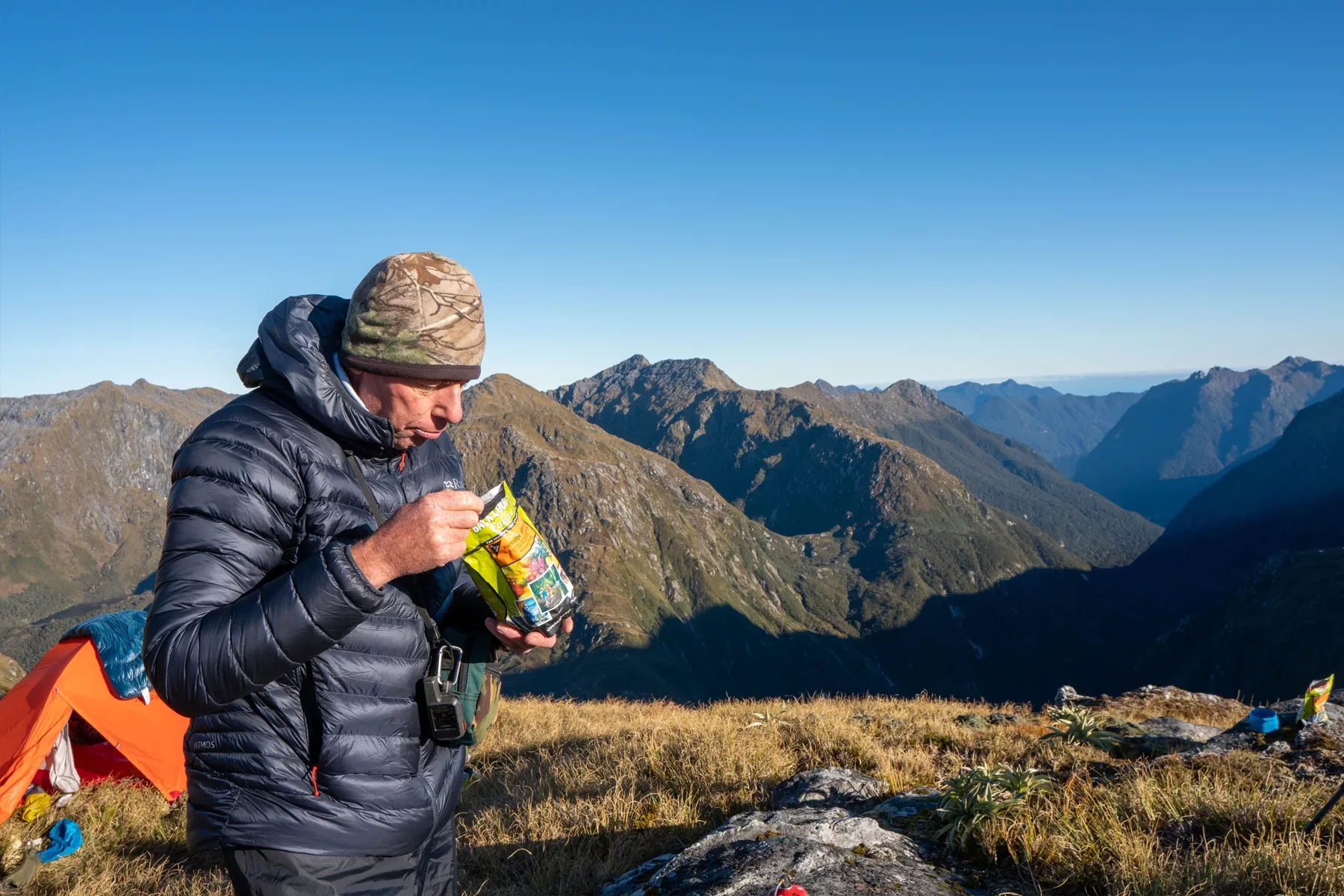
CRUNCH TIME
Willie quickly picked up the mob of mature bulls from a day earlier, and within the mob there was now a new bull. This bull had even bigger antlers and a few more points than the rest-was he the big 15 we were searching for? A closer look through the spotter told us that unfortunately he wasn’t. He had similar genetics and shape but was missing both of his bey tines. Nonetheless, he was mature and extremely impressive.
While I filmed Greg and Willie looking through the spotting scope, their excitement and reaction to the bull made me very eager to check him out for myself. This was especially so after they said he looked mature and was a potential shooter if I wanted to take him. I really admire Greg and Willie’s restraint of only wanting to take one good Wapiti trophy, and then holding out for that monster ‘unicorn’ that might one day tempt them to get behind the rifle again. The herd simply can’t produce enough mature bulls if every hunter shoots a bull each time they get a ballot.
When I finally got the chance to look through the spotter at him, my heart started racing. The bull was standing next to the big 12 pointer from the previous day and he dwarfed it, both in body size and antlers. This was a stunning animal that ticked all the boxes of my dream trophy. We had a considerable walk on our hands to get within shooting range of him and the wind wasn’t ideal. We were hoping the thermal winds would be strong enough to keep our sent away from him and the other bulls. While traversing the main ridge, we kept a regular eye on his location, and I vividly remember how impressive he looked in the sun with the shadow of his antlers silhouetted on a rock behind.
When we got to the end of the ridge it was decision time. Do we carry on and out the tops route so we can get a boat pickup before the pending storm hits, or do we just go all-in for the bull and deal with the consequences of that decision later? It wasn’t really a hard decision, but it meant that we were potentially looking at riding out a few rough days in the tent. The stalk was on!
THE WAPITI BULL STALK IS ON
To stay out of sight of the bull, we now had to drop down and traverse the dark side of the ridge. This entailed an interesting sidle through steep rocks with verglas ice, and of course all above a big drop-off. Everything was frozen and it felt like being in a freezer.
Once we reached the saddle, we popped up with our binos and were relieved to see the bull was still in the same location. He was now 800 yards away so we identified an ideal looking grassy knoll beneath us that would place us within a comfortable 350 yard shot. To approach him, we were now going to be in direct sight but luckily there was a slippery gut in the shadow of a rockface that could partly conceal us. Everything was so quiet. All I could hear was my heavy breathing and bouncing heart rate. Once we got closer, Willie accidentally triggered a loose rock that took off downhill. At the time it felt like the whole valley would hear it, but the bull didn’t seem to react, so maybe they are just used to them. We now had to cross over an open flat to reach the knoll and were down on all fours, praying the bull wouldn’t sense us. We got there undetected and now had to set up the rifle.
Everything was going to plan. But just when we thought the tense part was over we heard a helicopter in the distance and it was heading straight towards us. In such remote country, what were the chances of this? My heart was pounding as I expected this cagey old bull to make a run for it at any second. In disbelief, he stayed still and tilted his head back to look straight up at the helicopter. Maybe he’d learnt over the years that a good bull like himself was safe from the FWF operators.
Once the helicopter passed, he headed straight for a rock cave and backed right up into it, with just his head and antlers poking out. We carried on setting up and tried to re-settle the nerves. I quickly passed the camera to Willie, got dialled in behind the rifle while Greg got setup on the spotter. Now only 330 yards from him, we had a good chance to evaluate him properly and it was easy to see he was old. A big filled out body, low head and neck, his back was sagging, and his pedicles were nowhere to be seen. He was a shooter for sure. Part of his body was still concealed inside the rock cave but after a few lengthy minutes, he walked out a little further.
Unfortunately, a fair chunk of his front shoulder was now covered by a boulder, so we waited some more. There was no need to take a risky shot when we were undetected. Suddenly he walked out a step further, making his shoulder visible above the boulder. Greg gave the all-clear on the spotter cam and Willie was rolling on the big camera. I held my breath and squeezed the trigger.

FIORDLAND REALITY BITES
Boom. It felt like a good shot, and I instantly heard the impact. The bull lurched 30 yards and then toppled over with his antlers sticking up and out of the tussock, we’d got him! Man, what an impressive sight that was! That’s when reality started to kick in. I had a lot of mixed feelings. I was undoubtedly super stoked about taking such a great Wapiti, but I was also a little sad. That was the end of the quest, the search for a big mature bull. To watch a majestic animal draw his last breathe was a little emotional too. At the same time, it was good to know that he was fully mature and was nearing the end of his prime, so he’d had a good chance to pass on his genetics. Knowing that we had let so many other good bulls go over the years made it feel right to take him. He felt earn't.
When we reached him, I couldn’t believe how big he was, especially his body. It was mind-blowing. I’ve seen a lot of big stags in Poland, but they were nothing compared to him. And he was even older than we’d thought - his coronets were right down on his skull. We were all a bit overwhelmed by his sheer size and what that meant going forward for our pack weights. The real mission was about to start! We skinned the bull and then took as much meat as we could carry. Our packs were loaded to the brim. I had the head skin, jaw and head, while Willie and Greg took the meat and my camera gear. My pack must’ve been well over 50 kilograms, one of the heaviest packs I’ve ever carried in the mountains. Now we had about 15 hours of walking to do…

Greg went ahead to scout a route while Willie and I finished packing and took care of the filming. The idea was to take a more direct route straight down into the main valley although it looked very steep on the map. Greg called on the radio and said it was “steep and maybe a goer”. Willie and I agreed that if it wasn’t a “piece of piss”, it most definitely was not a goer so we opted for the safer but much longer option. We carried on along the high ridge in dwindling daylight and hoped to get along and out to a sheltered saddle for the night. After a couple hours of walking with headlamps, it completely clagged in. We tried to carry on with our GPS’s, but a little tricky traverse that should’ve only taken five to ten minutes, saw us spend 45 minutes going virtually nowhere, so we gave up for the day and luckily enough stumbled upon a good camping spot.
We woke to rain and knew that with a big day ahead of us, it wasn’t looking good for our chances to get back out and across the lake. To make matters worse, the first few hours along the tops were again in clag but we pushed on through some steep sections and made it to the bush edge. The real struggle started once we were in the bush. Trying to get through thick swampy bush with heavy antlers strapped to your pack isn’t easy and it certainly tested my mind. The antlers kept catching branches and I was constantly getting stuck.
This suffering is a big part of earning the trophy for me. Whenever things got tough, it only took a glance to the side to see the big antlers on my back to regain some positive energy. After nine hours of walking, we decided to call it quits for the day. It was dark, my knees were aching, and I had a bit of trench foot kicking in which made each step feel like walking on burning glass!

THE PAYOFF
We got up early, packed in the dark and carried on for the remaining three hours in heavy rain and wind. We had no idea if our boat pickup was going to be waiting for us or if we’d be spending a few days waiting for the storm to pass. But the boat was there at the lake edge, so we jumped straight on, dumped the heavy packs, and soaked up the final journey out from the towering mountains back to the truck.
For me, this was a memento for all the trips in there and all the animals we’d let go. He was my one bull of a lifetime.
The Wapiti experience isn’t about getting an animal every time you go in there. It’s about the journey, the animals you see, the struggles and the camaraderie. Getting a bull isn’t a one man show, it’s a team effort. That’s the Wapiti dream.
You can also head to TVNZ OnDemand and view the NZ Hunter Adventures episode of Emil's hunt!
To keep up to date with our latest blog sign up to our newsletter.

